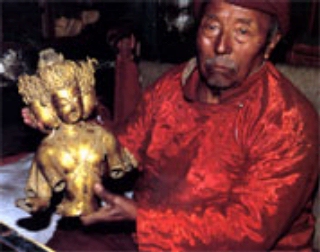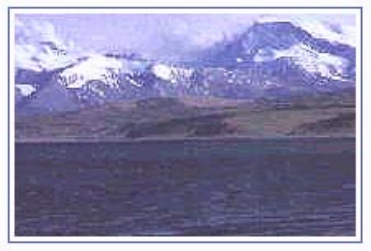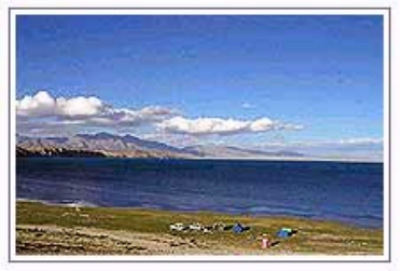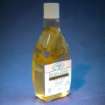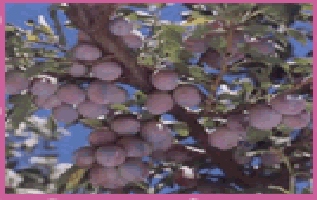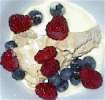Maslow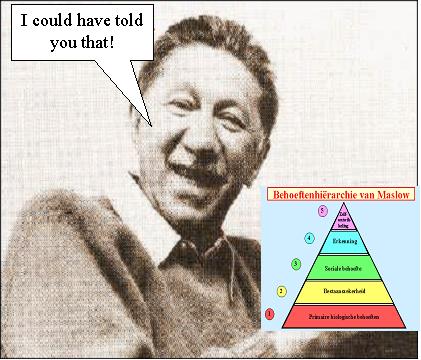
Maslow's Hierarchy of Needs
Citation: Huitt, W. (2004). Maslow's hierarchy of needs. Educational Psychology Interactive. Valdosta, GA: Valdosta State University. Retrieved [date] from, http://chiron.valdosta.edu/whuitt/col/regsys/maslow.html.
--------------------------------------------------------------------------------
Return to: | Courses | Home |
--------------------------------------------------------------------------------
Abraham Maslow (1954) attempted to synthesize a large body of research related to human motivation. Prior to Maslow, researchers generally focused separately on such factors as biology, achievement, or power to explain what energizes, directs, and sustains human behavior. Maslow posited a hierarchy of human needs based on two groupings: deficiency needs and growth needs. Within the deficiency needs, each lower need must be met before moving to the next higher level. Once each of these needs has been satisfied, if at some future time a deficiency is detected, the individual will act to remove the deficiency. The first four levels are:
1) Physiological: hunger, thirst, bodily comforts, etc.;
2) Safety/security: out of danger;
3) Belonginess and Love: affiliate with others, be accepted; and
4) Esteem: to achieve, be competent, gain approval and recognition.
According to Maslow, an individual is ready to act upon the growth needs if and only if the deficiency needs are met. Maslow's initial conceptualization included only one growth need--self-actualization. Self-actualized people are characterized by: 1) being problem-focused; 2) incorporating an ongoing freshness of appreciation of life; 3) a concern about personal growth; and 4) the ability to have peak experiences. Maslow later differentiated the growth need of self-actualization, specifically naming two lower-level growth needs prior to general level of self-actualization (Maslow & Lowery, 1998) and one beyond that level (Maslow, 1971). They are:
5) Cognitive: to know, to understand, and explore;
6) Aesthetic: symmetry, order, and beauty;
7) Self-actualization: to find self-fulfillment and realize one's potential; and
8) Self-transcendence: to connect to something beyond the ego or to help others find self-fulfillment and realize their potential.
Maslow's basic position is that as one becomes more self-actualized and self-transcendent, one becomes more wise (develops wisdom) and automatically knows what to do in a wide variety of situations. Daniels (2001) suggests that Maslow's ultimate conclusion that the highest levels of self-actualization are transcendent in their nature may be one of his most important contributions to the study of human behavior and motivation.
Norwood (1999) proposes that Maslow's hierarchy can be used to describe the kinds of information that individual's seek at different levels. For example, individuals at the lowest level seek coping information in order to meet their basic needs. Information that is not directly connected to helping a person meet his or her needs in a very short time span is simply left unattended. Individuals at the safety level need helping information. They seek to be assisted in seeing how they can be safe and secure. Enlightening information is sought by individuals seeking to meet their belongingness needs. Quite often this can be found in books or other materials on relationship development. Empowering information is sought by people at the esteem level. They are looking for information on how their ego can be developed. Finally, people in the growth levels of cogntive, aesthetic, and self-actualization seek edifying information. While Norwood does not specifically address the level of transcendence, I believe it safe to say that individuals at this stage would seek information on how to connect to something beyond themselves or to how others could be edified.
Maslow published his first conceptualization of his theory over 50 years ago (Maslow, 1943) and it has since become one of the most popular and often cited theories of human motivation. An interesting phenomenon related to Maslow's work is that in spite of a lack of evidence to support his hierarchy, it enjoys wide acceptance (Wahba & Bridgewell, 1976; Soper, Milford & Rosenthal, 1995).
The few major studies that have been completed on the hierarchy seem to support the proposals of William James (1892/1962) and Mathes (1981) that there are three levels of human needs. James hypothesized the levels of material (physiological, safety), social (belongingness, esteem), and spiritual. Mathes proposed the three levels were physiological, belonginess, and self-actualization; he considered security and self-esteem as unwarranted. Alderfer (1972) developed a comparable hierarchy with his ERG (existence, relatedness, and growth) theory. His approach modified Maslow's theory based on the work of Gordon Allport (1960, 1961) who incorporated concepts from systems theory into his work on personality.
Alderfer's Hierarchy of Motivational Needs
Level of Need
Definition
Properties
Growth
Impel a person to make creative or productive effects on himself and his environment Satisfied through using capabilities in engaging problems; creates a greater sense of wholeness and fullness as a human being
Relatedness
Involve relationships with significant others Satisfied by mutually sharing thoughts and feelings; acceptance, confirmation, under- standing, and influence are elements
Existence
Includes all of the various forms of material and psychological desires When divided among people one person's gain is another's loss if resources are limited
Maslow recognized that not all personalities followed his proposed hierarchy. While a variety of personality dimensions might be considered as related to motivational needs, one of the most often cited is that of introversion and extroversion. Reorganizing Maslow's hierarchy based on the work of Alderfer and considering the introversion/extraversion dimension of personality results in three levels, each with an introverted and extroverted component. This organization suggests there may be two aspects of each level that differentiate how people relate to each set of needs. Different personalities might relate more to one dimension than the other. For example, an introvert at the level of Other/Relatedness might be more concerned with his or her own perceptions of being included in a group, whereas an extrovert at that same level would pay more attention to how others value that membership.
A Reorganization of Maslow's and Alderfer's Hierarchies
Level Introversion Extroversion
Growth Self-Actualization (development of competencies [knowledge, attitudes, and skills] and character) Transcendence (assisting in the development of others' competencies and character; relationships to the unknown, unknowable)
Other
(Relatedness) Personal identification with group, significant others (Belongingness) Value of person by group (Esteem)
Self
(Existence) Physiological, biological (including basic emotional needs) Connectedness, security
At this point there is little agreement about the identification of basic human needs and how they are ordered. For example, Ryan & Deci (2000) also suggest three needs, although they are not necessarily arranged hierarchically: the need for autonomy, the need for competence, and the need for relatedness. Thompson, Grace and Cohen (2001) state the most important needs for children are connection, recognition, and power. Nohria, Lawrence, and Wilson (2001) provide evidence from a sociobiology theory of motivation that humans have four basic needs: (1) acquire objects and experiences; (2) bond with others in long-term relationships of mutual care and commitment; (3) learn and make sense of the world and of ourselves; and (4) to defend ourselves, our loved ones, beliefs and resources from harm. The Institute for Management Excellence (2001) suggests there are nine basic human needs: (1) security, (2) adventure, (3) freedom, (4) exchange, (5) power, (6) expansion, (7) acceptance, (8) community, and (9) expression.
Notice that bonding and relatedness are a component of every theory. However, there do not seem to be any others that are mentioned by all theorists. Franken (2001) suggests this lack of accord may be a result of different philosophies of researchers rather than differences among human beings. In addition, he reviews research that shows a person's explanatory or attributional style will modify the list of basic needs. Therefore, it seems appropriate to ask people what they want and how their needs could be met rather than relying on an unsupported theory. For example, Waitley (1996) advises having a person imagine what life would be like if time and money were not an object in a person's life. That is, what would the person do this week, this month, next month, if he or she had all the money and time needed to engage in the activities and were secure that both would be available again next year. With some follow-up questions to identify what is keeping the person from happening now, this open-ended approach is likely to identify the most important needs of the individual.
There is much work still to be done in this area before we can rely on a theory to be more informative than simply collecting and analyzing data. However, this body of research can be very important to parents, educators, administrators and others concerned with developing and using human potential. It provides an outline of some important issues that must be addressed if human beings are to achieve the levels of character and competencies necessary to be successful in the information age.
References
Alderfer, C. (1972). Existence, relatedness, & growth. New York: Free Press.
Allport, G. (1960). Personality and social encounter: Selected essays. New York: Beacon Press.
Allport, G. (1961). Pattern and growth in personality. New York: Holt, Rinehart and Winston.
Daniels, M. (2001). Maslows's concept of self-actualization. Retrieved February 2004, from http://www.mdani.demon.co.uk/archive/MDMaslow.htm
Franken, R. (2001). Human motivation (5th ed.).. Pacific Grove, CA: Brooks/Cole.
Institute for Management Excellence. (2001). The nine basic human needs. Online Newsletter. Retrieved February 2004, from http://www.itstime.com/print/jun97p.htm
James, W. (1892/1962). Psychology: Briefer course. New York: Collier.
Maslow, A. (1943). A theory of human motivation. Psychological Review, 50, 370-396. Retrieved June 2001, from http://psychclassics.yorku.ca/Maslow/motivation.htm.
Maslow, A. (1954). Motivation and personality. New York: Harper.
Maslow, A. (1971). The farther reaches of human nature. New York: The Viking Press.
Maslow, A., & Lowery, R. (Ed.). (1998). Toward a psychology of being (3rd ed.). New York: Wiley & Sons.
Mathes, E. (1981, Fall). Maslow's hierarchy of needs as a guide for living. Journal of Humanistic Psychology, 21, 69-72.
Nohria, N., Lawrence, P., & Wilson, E. (2001). Driven: How human nature shapes our choices. San Francisco: Jossey-Bass.
Norwood, G. (1999). Maslow's hierarchy of needs. The Truth Vectors (Part I). Retrieved May 2002, from http://www.deepermind.com/20maslow.htm
Ryan, R., & Deci, E. (2000). Self-determination theory and the facilitation of intrinsic motivation, social development, and well-being. American Psychologist, 55(1), 68-78. Retrieved February 2004, from http://www.psych.rochester.edu/SDT/publications/documents/2000RyanDeciSDT.pdf.
Soper, B., Milford, G., & Rosenthal, G. (1995). Belief when evidence does not support theory. Psychology & Marketing, 12(5), 415-422.
Thompson, M., Grace, C., & Cohen, L. (2001). Best friends, worst enemies: Understanding the social lives of children. New York: Ballantine Books. http://www.amazon.com/exec/obidos/ASIN/0345438094/qid=1024322725/sr=2-1/ref=sr_2_1/103-0382559-6049463
Wahba, A., & Bridgewell, L. (1976). Maslow reconsidered: A review of research on the need hierarchy theory. Organizational Behavior and Human Performance, 15, 212-240.
Waitley, D. (1996). The new dynamics of goal setting: Flextactics for a fast-changing world. New York: William Morrow.
--------------------------------------------------------------------------------
Return to: | Courses | Home |
Posted by philcutrara1
at 7:34 AM EDT



